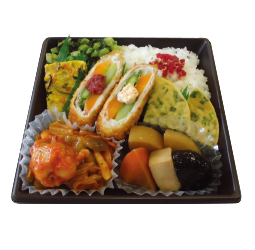Home > Highlighting JAPAN >Highlighting Japan December 2015>A Society of Health and Longevity
Highlighting JAPAN


Aiming to Live Long and Prosper
Nagano Prefecture once had Japan's worst death rate from stroke and similar illnesses, with many residents consuming high daily levels of salt. Roughly twenty years ago, however, the prefecture formerly known as Shinshu decided to improve the local lifestyle, and is now known as the country's healthiest and longest-lived prefecture. Its new Shinshu ACE Project aims to go further, uniting Nagano's residents in a drive to become the healthiest and longest-lived region
in the entire world.
Nagano Prefecture boasted the top average life span for both men and women in Japan as of 2010. In a further effort starting in 2014, Nagano has been seeking to go far beyond that with the Shinshu ACE Project, an action plan to transform itself into the world’s top region in health and life expectancy. The project calls on every resident to proactively engage in three activities: Action (be active and mobile), Check (receive medical examinations), and Eat (consume a healthy diet). Hideko Kobayashi of the Nagano Prefecture Health and Welfare Department took time to outline this drive for supreme health and longevity.
Nagano’s Health and Welfare Research Project determined the following keys to health and longevity: A life with a sense of purpose due to a high level of ambition in work and enthusiastic participation in social activities; an elevated sense of health consciousness, with great results in health-building activities; and a high standard of public health and enriched perinatal care.
As of 2012, Nagano Prefecture also ranked first nationally in the percentage of employed senior citizens for both men and women. The ostensible reasons for this are the large number of the population working as farmers, which entails no retirement age, and abundant opportunities to participate in volunteer clubs and activities.
On the other hand, in comparison to the nationally recommended daily salt intake amounts of 8 grams or less for men and 7 grams or less for women, adults in Nagano average 10.6 grams. As of 2010, local death rates from strokes are high as well, ranking thirteenth nationally for men and eighth for women.
Despite these statistics, the prefecture’s 2010 top ranking in both average life span and healthy life expectancy (the average span of independent activity) for both sexes has been maintained largely for two reasons. One is the high rate of vegetable consumption, which was ranked first for both men and women as of 2012. The other is being among the lowest in its number of habitual smokers, cases of metabolic syndrome and at-risk cases of metabolic syndrome. Moreover, beginning with a national rank of number one in 2012 in the number of public health nurses per 100,000 residents, health services provided by specialists in the region are top-notch, and there is also an abundance of volunteer health insurance guidance staff and diet improvement specialists who can educate residents in proper, healthy lifestyles.
“In 1980, when we began a concerted effort to promote a low-sodium diet, housewives in the prefecture averaged a daily salt intake of 15.9 grams,” Kobayashi explains. “We spent many years building up our efforts, such as collaborating with manufacturers to develop low-sodium products and holding low-sodium orientation courses taught by dieticians and diet improvement specialists. Even now, however, we are ranked high nationally in salt intake—around second—so we are definitely not exemplary in that respect,” she continues. “We need to work hard to improve on this point, and our goal of instilling preventive lifestyle habits through an emphasis on the three activities of eating properly, exercise and medical treatment has taken shape as the Shinshu ACE Project.”
The content of the project specifically recommends such regimens as fast-paced walking and exercise (action); receiving annual medical checkups and reconsidering lifestyle habits, as well as measuring blood pressure daily (check); and limiting salt intake per meal to three grams, trying to eat an extra plate of vegetables, and verifying the salt content of food when eating out (eat).
A great many plans have already been put into action, with most cities, towns and villages pushing through plans for maintaining walking courses, providing ACE menus at convenience stores and restaurants, and distributing information on reducing sodium to all 810,000 households.
In 2013, national medical care expenditures reached an all-time high of 40 trillion yen, of which costs for the elderly (age 65 and above) accounted for 23 trillion yen. Meanwhile, in Nagano Prefecture the medical fees per person for the advanced elderly (age 75 and above) have long maintained the lowest level nationally.
“While it’s crucial to reduce the cost of medical fees, that outcome is a byproduct of individual health and happiness, so I believe it’s vital for us to build up the health of everyone, young and old, men and women,” Kobayashi adds.
There is a sense of unity here that binds Nagano’s entire community together—including corporations, municipalities, hospitals, schools, restaurants, convenience stores, supermarkets and organizations and volunteers—in this quest to become the world’s model for health and longevity. Although the Shinshu ACE Project has only just begun, it appears to be off to an energetic and promising start in enriching people’s lives.
© 2009 Cabinet Office, Government of Japan








